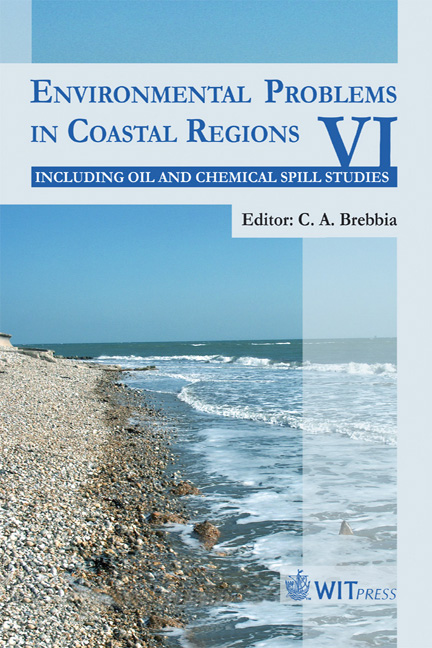Influence Of Geochemical And Anthropogenic Sources On Rainwater Chemical Composition In Two Coastal Sites Impacted By The Gas And Oil Industry In Campeche, Mexico
Price
Free (open access)
Transaction
Volume
88
Pages
10
Published
2006
Size
1,221 kb
Paper DOI
10.2495/CENV060401
Copyright
WIT Press
Author(s)
R. M. Cerón, J. G. Cerón & M. Muriel
Abstract
The purpose of this research was to study rainwater chemical composition to assess the impact of marine aerosol and anthropogenic emissions, using Cl- as a sea-salt aerosol tracer. Influence of different sources to excess of ions was detected by means of back air-mass trajectories. Fieldwork was done from July to November 2004, in two coastal sites, Carmen Island and San Antonio Cardenas in Campeche Gulf, Mexico. Rainwater samples were analyzed for Na+, Mg2+, K+, Ca2+, Cl-, SO4 2-, NO3 - and NH4 +, the average concentrations are reported and the results discussed. The observed concentrations are compared with other works in the Caribbean Sea Region and are interpreted in terms of enrichment factors and meteorological conditions. Keywords: rainwater chemistry, marine aerosol, coastal rainwater composition, Mexico. 1 Introduction Background level is a useful tool when a diagnosis about the possible environmental impact caused in a specific zone is required, allowing to establish a comparison when reference laws or standards of non criteria pollutants are not available. Commonly, these values are established for remote areas with a minimal anthropogenic influence, by this way, it is possible to accomplish a diagnosis of impact caused by non criteria pollutants such as rainwater acidity, carbonyl compounds, and so on. In fact, research on precipitation chemical
Keywords
rainwater chemistry, marine aerosol, coastal rainwater composition, Mexico.





